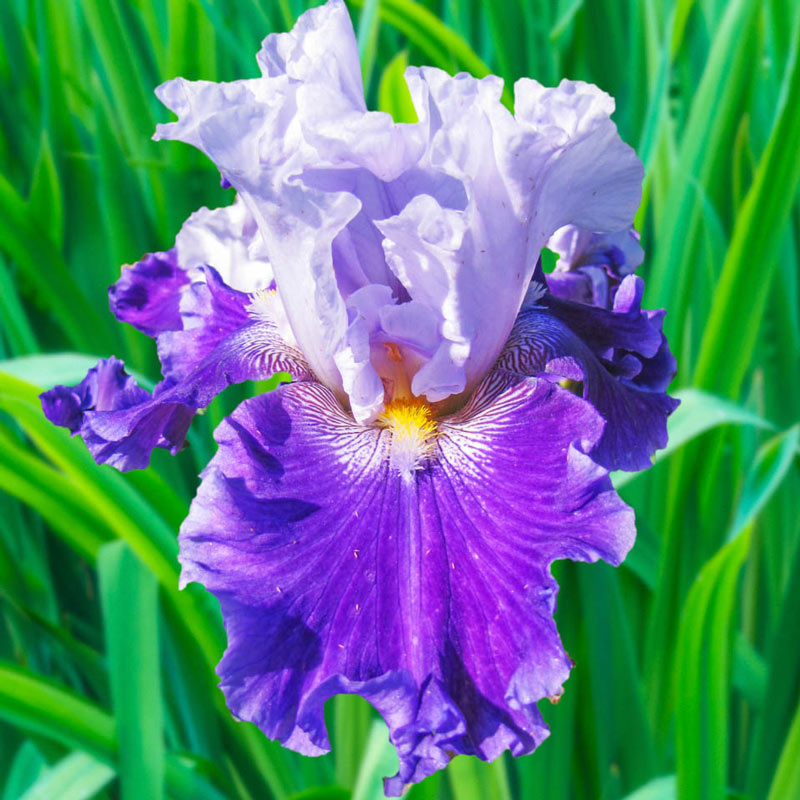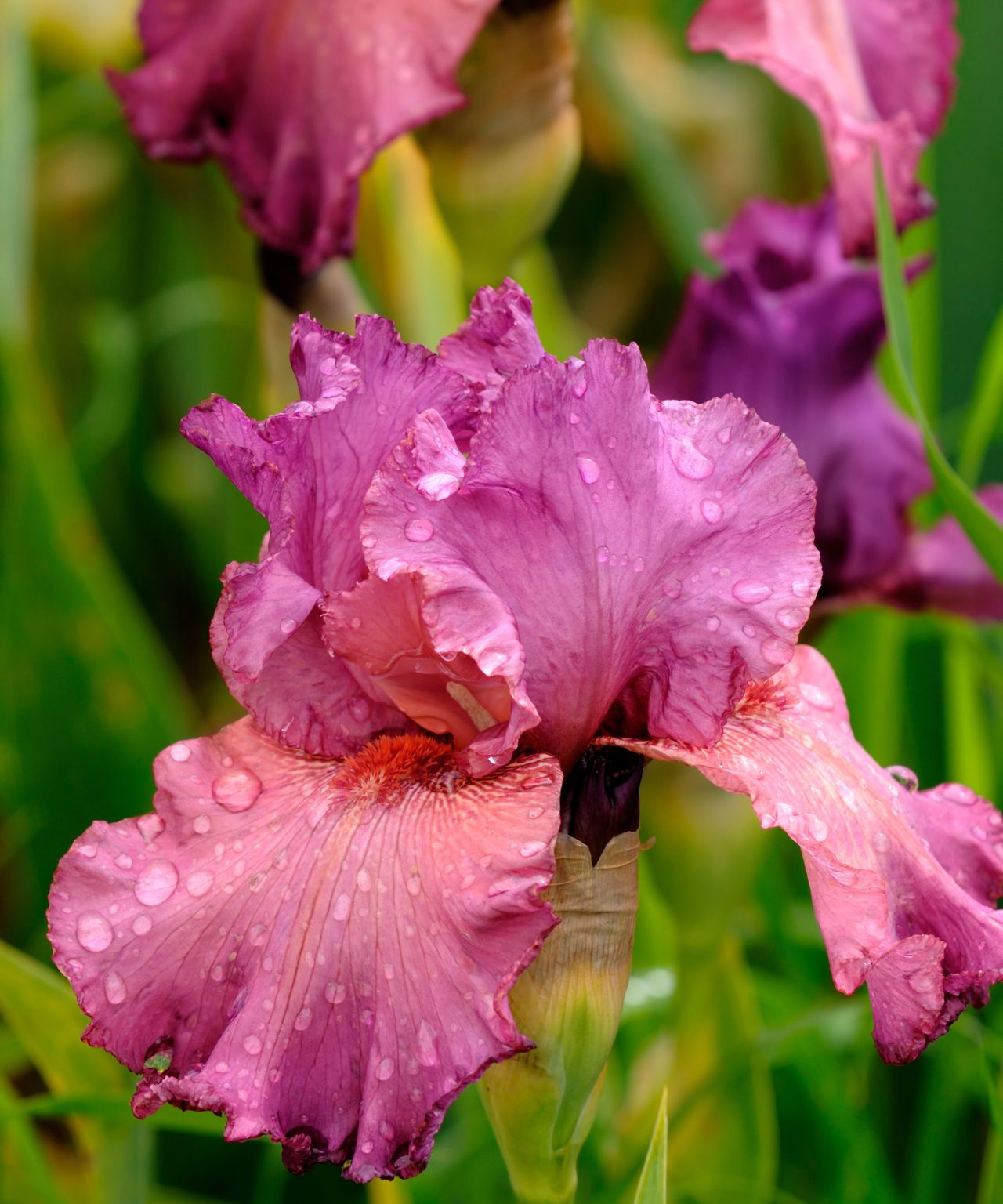Understanding the Lighting Needs of Bearded Irises
Bearded irises are known for their stunning blooms and elegant foliage, but to truly thrive, they require a delicate balance of sunlight and shade. Providing the right amount of light is crucial, as it directly impacts the plant’s growth, flowering, and overall health. In fact, bearded irises grown in optimal lighting conditions can produce more vibrant blooms and stronger stems. On the other hand, inadequate lighting can lead to weak growth, reduced blooming, and increased susceptibility to disease. When growing bearded irises in sun or shade, it’s essential to consider the specific lighting needs of the plant to create an environment that fosters healthy growth and beautiful blooms.
How to Choose the Perfect Spot for Your Bearded Iris
When it comes to selecting the ideal location for your bearded iris, there are several factors to consider. Sunlight intensity, duration, and direction all play a crucial role in determining the health and vibrancy of your bearded iris. Bearded irises generally require at least six hours of direct sunlight per day, but some varieties can tolerate partial shade. When choosing a location, consider the amount of sunlight the area receives and whether it’s suitable for your specific bearded iris variety. Gardens, borders, and containers are all suitable locations for bearded irises, as long as they receive the right amount of sunlight. For example, a south-facing garden bed that receives full sun for most of the day would be an ideal location for a sun-loving bearded iris variety. On the other hand, a partially shaded border or container would be better suited for a shade-tolerant variety. By selecting the right location, you can create an environment that fosters healthy growth and beautiful blooms.
The Impact of Sunlight on Bearded Iris Blooms
Sunlight plays a vital role in promoting healthy blooms and vibrant colors in bearded irises. When grown in optimal sunlight conditions, bearded irises can produce an abundance of blooms in a wide range of colors, from soft pastels to bold and bright hues. However, too little sunlight can lead to weak and spindly stems, fewer blooms, and duller colors. On the other hand, too much sunlight can cause the blooms to become scorched and faded, reducing their overall quality and quantity. Bearded irises grown in full sun require at least six hours of direct sunlight per day, while those grown in partial shade can thrive with as little as four hours of direct sunlight. By understanding the specific sunlight requirements of your bearded iris variety, you can create an environment that fosters healthy growth and vibrant blooms. For example, a bearded iris grown in a location that receives bearded iris sun or shade for six hours a day can produce more blooms and stronger stems than one grown in a location with inadequate sunlight. By providing the right amount of sunlight, you can unlock the full potential of your bearded iris and enjoy a stunning display of color and beauty.
Shade Tolerance: Can Bearded Irises Thrive in Partial Shade?
While bearded irises are often associated with full sun, many varieties can thrive in partial shade. In fact, some bearded iris varieties can tolerate as little as four hours of direct sunlight per day, making them ideal for gardens or borders that receive dappled shade. However, it’s essential to understand the benefits and drawbacks of growing bearded irises in partial shade. On the one hand, partial shade can help protect the plants from intense sunlight, reducing the risk of scorched blooms and foliage. On the other hand, too much shade can lead to weak and spindly stems, fewer blooms, and reduced vigor. To provide the right amount of shade for optimal growth, consider using shade cloth or trellises to filter or block intense sunlight. Additionally, choose bearded iris varieties that are specifically bred for shade tolerance, such as ‘Concertina’ or ‘Raspberry Sundae’. By understanding the shade tolerance of bearded irises, you can create a beautiful and thriving garden, even in areas with limited sunlight. Remember, when growing bearded irises in sun or shade, it’s crucial to consider the specific needs of your plants to ensure optimal growth and flowering.
Bearded Iris Varieties: Sun-Loving and Shade-Tolerant Options
When it comes to selecting the perfect bearded iris variety for your garden, it’s essential to consider the amount of sunlight your location receives. While some bearded irises thrive in full sun, others can tolerate partial shade. Here are some popular bearded iris varieties that excel in different lighting conditions:
Sun-loving options include ‘Immortality’, a tall, white bearded iris that requires at least six hours of direct sunlight per day, and ‘Concertina’, a vibrant, pink bearded iris that tolerates full sun to partial shade. For gardens that receive partial shade, consider ‘Raspberry Sundae’, a sweetly scented, pink bearded iris that thrives in four to six hours of direct sunlight, or ‘Beverly Sills’, a stunning, white bearded iris that tolerates partial shade to full sun.
When selecting a bearded iris variety, consider factors such as growth habit, flowering pattern, and color. Some bearded irises, like ‘Stairway to Heaven’, produce multiple blooms per stem, while others, like ‘Queen of Angels’, feature delicate, lacy foliage. By choosing a bearded iris variety that suits your garden’s lighting conditions, you can enjoy a stunning display of color and beauty. Remember, when growing bearded irises in sun or shade, it’s crucial to provide the right amount of light for optimal growth and flowering.
Creating a Balanced Lighting Environment for Bearded Irises
When it comes to creating a balanced lighting environment for bearded irises, it’s essential to consider the specific needs of your plants. While bearded irises require adequate sunlight to thrive, too much intense sunlight can be detrimental to their health. To strike the perfect balance, consider using shade cloth, trellises, or other supports to filter or block intense sunlight.
Shade cloth, for example, can be used to provide dappled shade, reducing the intensity of direct sunlight while still allowing your bearded irises to receive the light they need. Trellises, on the other hand, can provide structural support for your plants while also casting shade and creating a sense of depth in your garden. By incorporating these elements into your garden design, you can create a balanced lighting environment that promotes healthy growth and vibrant blooms.
In addition to using shade cloth and trellises, consider the orientation of your garden or container. Bearded irises grown in east- or west-facing locations tend to receive gentler, more indirect sunlight, which can be beneficial for plants that require partial shade. By taking these factors into account, you can create a balanced lighting environment that meets the unique needs of your bearded irises, whether they thrive in full sun or partial shade.
Remember, when growing bearded irises in sun or shade, it’s crucial to monitor their response to different lighting conditions and adjust your approach as needed. By providing the right amount of sunlight and shade, you can enjoy a stunning display of color and beauty in your garden.
Common Mistakes to Avoid When Growing Bearded Irises in Sun or Shade
When growing bearded irises in sun or shade, it’s essential to avoid common mistakes that can lead to poor growth, disease, or pest issues. One of the most critical mistakes is inadequate sunlight, which can result in weak, leggy stems and fewer blooms. On the other hand, too much intense sunlight can cause scorching, leading to browned or wilted leaves.
Overwatering is another common mistake that can be detrimental to bearded irises. These plants prefer well-draining soil and can be susceptible to root rot if the soil is too moist. Poor soil quality is also a common issue, as bearded irises require a balanced mix of nutrients to thrive. Failing to fertilize or prune regularly can also lead to subpar growth and flowering.
In addition to these mistakes, bearded iris growers should also be aware of pest and disease issues that can arise in sun or shade. For example, iris borers can be a problem in sunny locations, while fungal diseases may be more prevalent in shadier areas. By being mindful of these potential issues and taking steps to prevent them, growers can ensure their bearded irises receive the care they need to thrive.
By avoiding these common mistakes and providing the right amount of sunlight and shade, bearded iris growers can enjoy a stunning display of color and beauty in their gardens. Remember, bearded irises are adaptable plants that can thrive in a variety of lighting conditions, but they do require careful attention to their specific needs.
Optimizing Bearded Iris Care: Sunlight, Shade, and Beyond
When it comes to growing bearded irises, understanding the importance of sunlight and shade requirements is just the beginning. To truly thrive, these beautiful flowers require a holistic approach to care that incorporates proper watering, fertilization, and pruning techniques.
In addition to providing the right amount of sunlight and shade, bearded iris growers should also focus on maintaining well-draining soil with a balanced mix of nutrients. Regular watering is essential, but it’s equally important to avoid overwatering, which can lead to root rot and other problems.
Fertilization is another critical aspect of bearded iris care. A balanced fertilizer applied in the spring and summer months can help promote healthy growth and vibrant blooms. Pruning is also essential, as it helps to remove dead or damaged foliage and encourages new growth.
By considering the unique needs of bearded irises in terms of sunlight and shade, and combining this with a comprehensive approach to care, growers can enjoy a stunning display of color and beauty in their gardens. Whether you’re growing bearded irises in full sun or partial shade, with the right care and attention, these flowers are sure to thrive.
Remember, bearded iris sun or shade requirements are just one aspect of their overall care. By taking a holistic approach and considering all of the factors that contribute to their health and well-being, growers can enjoy a bountiful harvest of beautiful blooms for years to come.








